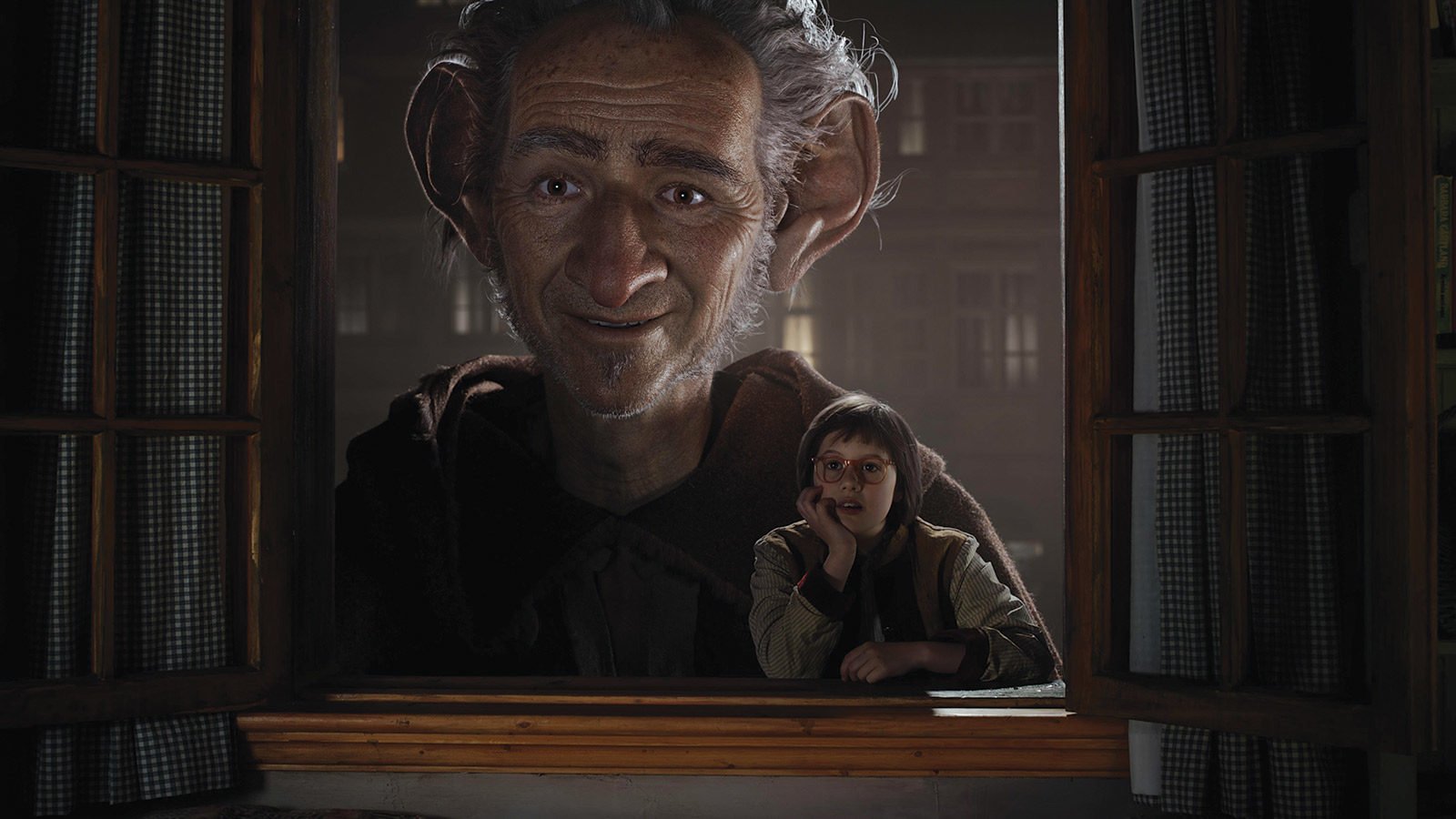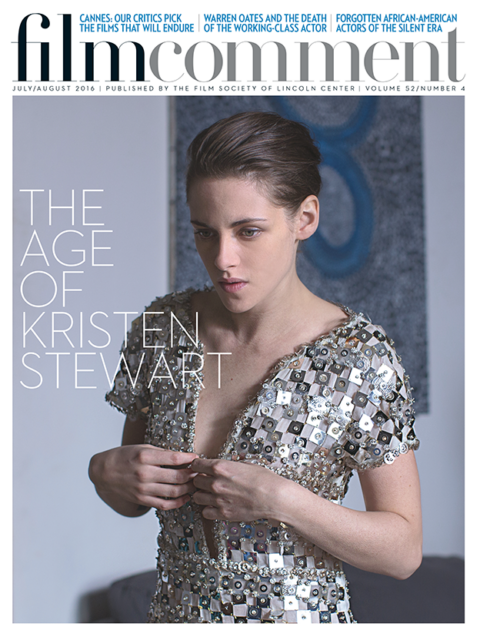By Michael Koresky in the July-August 2016 Issue

Review: The BFG
(Steven Spielberg, U.K./Canada/U.S., 2016)
It’s not easy to recall why something struck us when we were young. With childhood but a distant land, I recently reread The BFG by Roald Dahl, a book and an author that once upon a time meant a great deal to me and countless other little bookworms, and understood, with the rush of a sense memory, that it wasn’t the story arc or outlandish scenario that had appealed to me but the language. Dahl, in marvelous creations such as Charlie and the Chocolate Factory, Matilda, and The Witches, introduced us to the wonders of words, constructing sentences so scrumptious one felt inclined to take a bite out of them. And The BFG—a small, delicate novel about a huge, galumphing character—is perhaps Dahl’s greatest flight of linguistic fancy, a muckfrumping, swizzfiggling, sloshflunking contraption bursting with onomatopoeia and malapropisms and so many made-up words it feels like it’s inventing a new language—Finnegans Wake for tots.

From the July-August 2016 Issue
Also in this issue
With the pleasure of written words—how they look splashed out on a page, how they’re spelled, how they sound in our heads—necessarily missing, Steven Spielberg has to find ways to replace that magic in his Disney-produced adaptation of Dahl’s novel, about the blossoming friendship between little Sophie (Ruby Barnhill) and the benevolent behemoth who absconds with her from her London orphanage bedroom to a Northern England fantasyland. Employing his usual troupe of imagineers—cinematographer Janusz Kaminski, editor Michael Kahn, production designer Rick Carter, composer John Williams—the director relies on cutting-edge CGI, spectacular vistas, and, as in so many of today’s kiddie flicks, whiz-bang movement for his emotional effects, so that a work of enchanting frippery is amped up to the heights of cinematic adventure. It’s not that Spielberg’s film isn’t faithful—a word far more meaningless than Dahl’s goofy neologisms—to the author’s narrative, but that when put into self-consciously cinematic form, The BFG, which stands for Big Friendly Giant, becomes too big, too friendly, and too giant, in its rollicking gambols, patronizing slapstick, and certainly in its swelling sentimentality. The giant functions well as an authorial surrogate—he blows dreams into the heads of sleeping children, a nice metaphor, easily translatable from Dahl to Spielberg—but otherwise the film feels slick and a little anonymous.
At least there’s Mark Rylance, Spielberg’s unlikely new creative partner, recently Oscar-minted for his gorgeously crumpled portrait of a Soviet spy in the beautiful Bridge of Spies. Anyone who saw the actor onstage in his towering, Tony-awarded role in Jerusalem, as a blustering beast of a man living in the depths of the English shire, knows he can go big. But Rylance’s motion-capture work as the title character here is a lovely, pocket-size interpretation, and an antidote to the cloying Barnhill; unlike so many other actors doing voices for kiddie films, Rylance’s inward, self-critical BFG feels like a genuine performance. The actor’s decision to retreat, to disappear into his character’s giant husk, smartly and effectively underlines the class allegory of Dahl’s story: the BFG feels unworthy and outcast not simply because of his size but also his lack of education and improper grammar. Nowhere is this more apparent than in the film’s third movement, which sees the BFG accompanying Sophie to Buckingham Palace and trying to be on his best, tea-sipping, pinky-raised behavior in the presence of the Queen; he’s an earthy workingman struggling to fit—literally—inside the world of the upper-crusts.
With his fanciful tales of class struggle and his cheeky, colorful way with words, Dahl was a clear descendant of Charles Dickens—or “Dahl’s Chickens,” as he’s malapropped in Matilda. (In a nod, Sophie reads Nicholas Nickleby, as Celie learned to read with Oliver Twist in Spielberg’s The Color Purple.) Such matters get lost, however, amid Spielberg’s action contraptions, mostly involving brutish, bullying giants with terrifying names like Bloodbottler and Bonecruncher, who torment the comparably “runty” BFG in interminable sequences that recall the nonstop rambunctiousness of the motion-capture Adventures of Tintin, but without the runaway-train gracefulness. The lumbering weight of the film’s CGI squashes the boundless imagination of Dahl’s original story, which not only is about dreams but also glides ahead on dream logic.







